This is a mechanical trap that encircles the trunk of a tree. It protects the plant from pests living in the ground. Insects in an attempt to climb to the branches fall into the hunting belt. In particular, this simple device is effective against ants, weevils, whiteflies, caterpillars, aphids, cossacks, flower eaters, fruit mites and other garden eaters.
Hunting belts can be dry, sticky, treated with insecticides — special preparations against insects — or combined. There are ready-made devices in shops and garden centers, and they are easy to install on a tree according to the instructions on the package. Although a hunting belt can be made with your own hands without much effort and expense.
The best time is the very beginning of spring, when the buds on the trees have not swollen, and the pests have not yet begun to wake up after hibernation. But if you did not have time to catch this moment, you can set a trap later, it will also be quite effective in protecting the plant from crawling insects. For example, the same ants spread aphids in the garden throughout the season.
Depending on the type of construction, the fishing belts need to be periodically removed and immediately replaced or updated by applying certain means. On average, this is done once every 3-4 weeks before the onset of persistent autumn frosts.
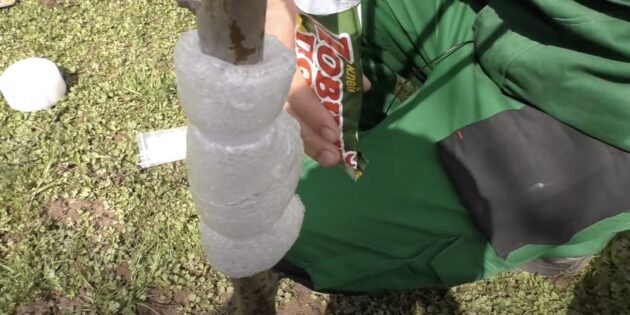
This trap can not be removed from the tree throughout the season, but only occasionally update the adhesive layer.
1. Attach a piece of foam polyethylene tape to the attachment point of the future belt — about 50 cm from the ground surface. Wrap the trunk with the material so that the ends are slightly overlapping. Cut off the excess.
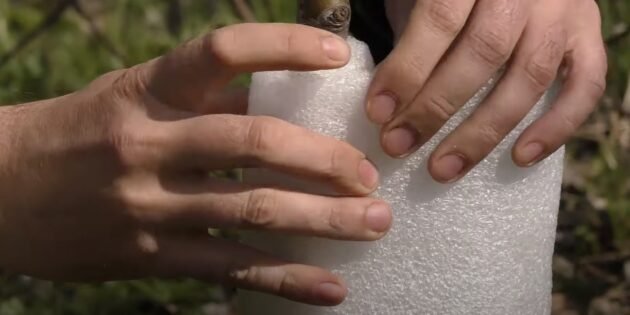
2. Wrap the tape blank around the barrel. Secure it with two plastic ties just above and just below the middle. Try to tighten the clamps as much as possible so that the polyethylene fits snugly to the tree.
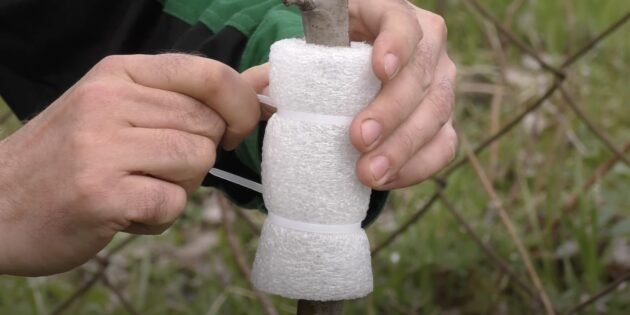
3. At the top of the belt, apply a generous layer of pest control glue. It should cover the entire circumference and voids between the ribbon and the tree trunk.
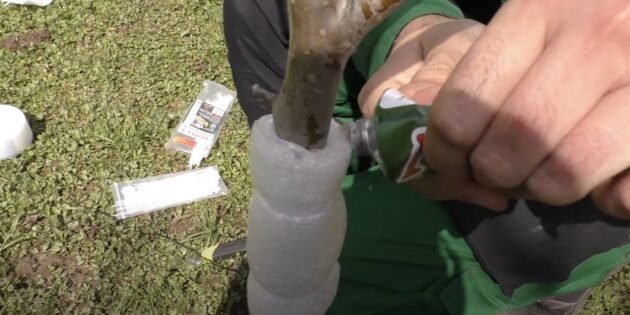
4. Then apply another layer of glue in the middle of the fishing belt. There should be a continuous contour around the trunk.

The hunting belt is ready. Periodically inspect it and, if necessary (for example, when drying, sticking a lot of pests or dust), update the glue layer.

An eco-friendly trap will be safe for pets.
1. Pour about 100 ml of vegetable oil into the container.
2. Place the cloth strips there and thoroughly soak them with liquid.
3. Wrap the tree trunk tightly with oiled tape in 3-4 layers. Tie its ends with a strong knot.
Periodically generously moisten the hunting belt with oil, without removing it from the tree. It is convenient to do this with a pipette, brush or syringe.

Pests will get stuck in a multi-layered fluffy trap.
1. Fold the sintepon in half.

2. Wrap the tree trunk with material in several layers. If the trunk is wide, take a longer piece of sintepon or use several.
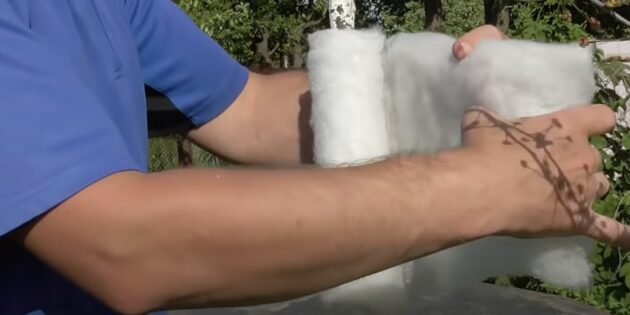
3. Secure the sintepon in the middle with tape.
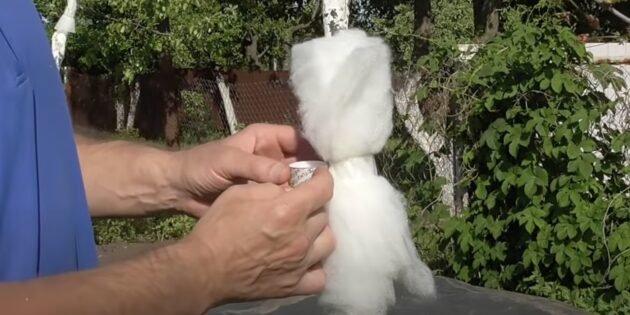
4. "Comb" the material from above and from below with a comb so that the fibers become voluminous and fluffy.

About once a month, change the sintepon belt to a new one.